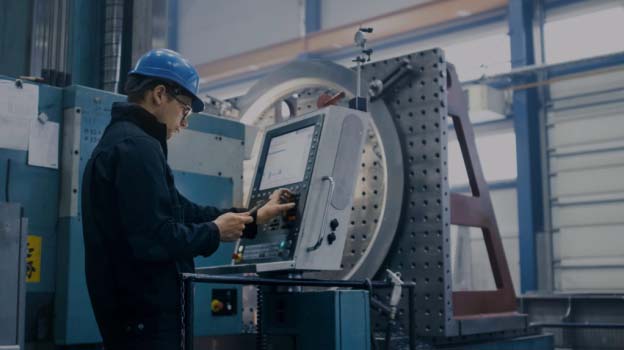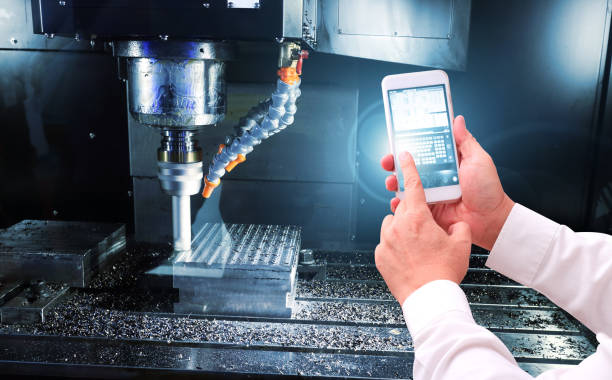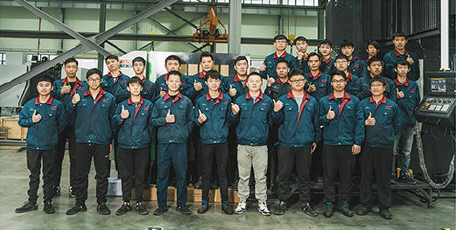Mastering how to use CNC software holds the key to precision manufacturing. Uncover secrets of effective CNC software use in this blog. Packed with expert insights, delve into the nuances of program operation and machine commands.
CNC stands for Computer Numerical Control. This software directs machines to shape and cut materials. To operate, CNC software requires certain parameters, such as part numbers, dimensions, and coordinates.
Without adverbs, say that knowledge of these parameters enhances user control.
More so, the CNC software also deciphers codes like G-code and M-code. G-code defines geometry and movement, M-code manages machine functions.
Applying CNC software demands expertise but also promises precision and efficiency.
This denotes the translation of alphanumeric G-codes into instructions for the CNC machine.
CNC software oversees the movement of the machine along different axes - X, Y, and Z.
CNC software plots the path that cutting tools follow, maximizing accuracy and efficiency.
The software adjusts the speed at which the material is fed into the machine, factoring in material type and cut depth.
CNC software regulates the rotational speed of the tool, optimizing machine performance and output quality.
CNC software scans for errors in G-code or parameters, alerting operators before mishaps occur.
CNC software employs predictive algorithms to avert machine collisions, ensuring safety and product quality.
The software monitors machine load, preventing damage from excessive strain.
CNC software seamlessly incorporates Computer-Aided Design (CAD) files, converting designs into real-life products.
Integration with Computer-Aided Manufacturing (CAM) allows the software to oversee the full production process.
CNC software permits operators to alter pre-set parameters, providing flexibility when needed.
CNC software assists in choosing the right material, taking into account the design and purpose of the end product.
The software schedules tasks, streamlining workflow and boosting productivity.
CNC software ensures the machine is always correctly set up, optimizing accuracy and repeatability.

CNC Software creates a route, a toolpath, for the tool. The tool follows this path to shape the material.
Input the machine’s specifications in the CNC software. The software adjusts commands to suit the machine's abilities.
CNC software accepts files in various formats like DXF, IGES, or STEP. Select the appropriate file, and the software does the rest.
The software offers a simulation feature. Witness a virtual replica of how the machine operates. This step aids in detecting errors before actual machining.
The software translates toolpaths into a language, G-code, which the machine comprehends. CNC machine executes this G-code to create the desired part.
Even after generating the G-code, modifications remain possible. Adjust the speed, feed rate, or toolpath directly in the software.
Define the properties of the workpiece in the software. Input the type, size, and position of the material.
Modern CNC software features a user-friendly interface. Navigate easily through the different functions and features.
During the machining process, adjustments might be necessary. CNC software allows for real-time changes, enhancing productivity and precision.
CNC software keeps track of various projects. Monitor project status, tool usage, and timelines efficiently.
Establish the orientation of the workpiece in the CNC software. Indicate whether the material setup is vertical, horizontal, or angled.
Input the desired precision level in the software. The machine follows these instructions to produce auto parts with remarkable accuracy.
The software commands the machine to change tools when needed. Automate the process for improved productivity and quality.
Monitor the machine's health through the software. Schedule a timely maintenance to ensure uninterrupted production.
In CNC operation, compatibility is key. Software must pair well with hardware. Most machines work best with specific programs, offering a smoother, more efficient process. Do research to match the software with the CNC machine.
Next, consider cost efficiency. High-end software can be expensive. However, software that saves time, reduces waste, and improves product quality may justify the cost. But, avoid overspending for features you don't need.
Now, turn attention to user-friendliness. Simplicity is a valuable factor. Novice users prefer intuitive layouts. Complex interfaces may lead to errors, slowing production. Choose a user-friendly program to ensure productivity.
Look for strong technical support. A good CNC software package should have robust support. Instant assistance can resolve issues, preventing production halts. Prioritize companies that offer reliable support services.
Upgradability is another vital factor. Technologies advance rapidly. Buying software that can upgrade ensures access to future improvements. Avoid outdated systems that limit growth.
Stability of the CNC software is paramount. Frequent crashes disrupt workflow. Opt for a stable, reliable software package. Make sure reviews confirm its stability before purchase.
Consider industry standards. Adopting standard software provides advantages. Most operators are familiar with popular programs. Training new users becomes easier. Use standard software for greater operational efficiency.
Remember to check simulation capabilities. Simulations prevent costly errors. Before running on the actual machine, run a simulation. Software with good simulation capabilities saves resources.
Customizability is another factor. Software should adapt to specific needs. A customizable program can accommodate unique production needs. Avoid rigid software that doesn't allow for changes.
Training availability is essential too. A complex program is useless without training. Look for companies offering comprehensive training. Ensure workers can effectively use the software.
Post-processing matters. After machining, software should generate a report. This post-processing helps track production. Choose software that offers this feature for better management.
Automation features can enhance productivity. Look for software that supports automation. With these features, tasks like toolpath generation become simpler. A program with good automation can boost output.
Community support can be beneficial. User communities can offer tips, share experiences, and provide solutions. Search for software with an active community. An engaged user base can provide helpful insights.
Consider future-proofing. Technology evolves fast. Ensure the chosen software is future-proof. Regular updates and improvements will keep your production in step with technological progress.

· Menu Navigation: In CNC software, navigating menus is vital. Each menu contains different tools and options. Look for 'File', 'Edit', and 'View' menus. They'll help with creating, modifying, and viewing projects.
· Toolbar Understanding: The toolbar houses quick-access icons. Find 'Load', 'Save', 'Start', and 'Stop'. The toolbar's ease ensures a smooth workflow.
· Viewport Manipulation: The 3D viewport shows your project's virtual representation. Use your mouse to rotate, pan, or zoom the viewport.
· Layer Control: Layer management is crucial. One can isolate, hide, or lock individual layers. This helps in focusing on specific project elements.
· Coordinate Systems: CNC operations rely on coordinates. Three axes, X, Y, and Z, represent these. Remember, X is horizontal, Y is vertical, and Z is depth.
· Toolpath Visuals: Visuals show the tool's projected path. Blue lines indicate cutting moves, while yellow lines represent non-cutting moves.
· Alert Notifications: The software gives notifications for errors or warnings. Pay attention to pop-ups in red or yellow.
· G-Code Panel: G-code, the language of CNC, appears here. This panel shows all movement commands for the machine.
· Simulation Panel: Here, run a virtual test of your project. Before actual cutting, a simulation checks for errors.
· Hardware Monitoring: This keeps track of your machine's health. Monitor temperatures, RPMs, and other important statistics.
· Machine Status: The current state of the machine is shown here. Look for 'Idle', 'Running', or 'Paused'.
· Control Panel: Direct machine control happens here. You can start, stop, or pause operations.
· Work Offset: Setting an offset determines your project's start point. It involves X, Y, and Z coordinates.
· Error Log: All machine errors are recorded here. Review the log for troubleshooting.
· Installation Process: Installing the software is step one. Download the setup file. Then, follow the on-screen prompts.
· Basic Setup: Once installed, adjust basic settings. Choose your machine, units of measurement, and other preferences.
· Tool Database: Catalog your tools here. Add details such as diameter, flute length, and speed parameters.
· First Project: To start, select 'New Project'. Input your workpiece dimensions and material type.
· Workpiece Setup: Place the workpiece on the machine bed. Make sure it is secure.
· File Import: Import your design file. Supported formats are usually DXF, SVG, or STL.
· Toolpath Creation: Next, define the toolpath. Select the tool, cutting parameters, and the path style.
· Simulation Run: Conduct a simulation. Verify that the toolpath is error-free.
· Post-processing: Post-process the toolpath into G-code. This prepares it for the machine.
· Code Transfer: Move the G-code to your machine. Use a USB stick or a direct network connection.
· Real-time Monitoring: Monitor your job in real-time. Watch for any possible errors.
· Job Completion: After the job, check the workpiece. Ensure it matches the original design.
· Machine Cleanup: Clean your machine after each job. Remove chips and dust.
· File Saving: Lastly, save your project file. This allows for easy retrieval in the future.
In CNC software, the first step is loading CAD. CAD or Computer-Aided Design files contain the 3D models for machining. These files guide the tool path creation.
After that, material defining comes into play. Each material behaves differently. Defining material helps the software understand how to interact with it.
Once the material is set, selection of tools is necessary. Drill bits, end mills, and lathe tools - CNC software offers a vast library of tools to choose from.
The next step is defining operations. Do you need to mill, drill, or turn? CNC software supports a wide variety of machining operations.
With operations set, the software generates toolpaths. These paths control the movement of tools during machining.
Before actual machining, checking interferences is crucial. This process helps detect any possible collision between the tool and the workpiece.
After interference checks, parameters need adjustments. Spindle speed, feed rate, and other settings are fine-tuned for optimal machining conditions.
Now, running the simulation of the machining process gives an overview of the expected result. A virtual representation shows the entire machining operation without actual material removal.
After running the simulation, it's time to analyze the results. Look for any errors, inaccuracies, or inefficiencies in the machining process.
Following analysis, corrections are made. These may involve changing tools, adjusting parameters, or altering operations.
Once corrections are made, repeat the simulation. Doing so ensures all adjustments have been successfully incorporated and no new issues have arisen.
After satisfactory simulation results, finalize the setup. Ensure all settings are properly configured before proceeding.
The last step in the process is exporting G-Code. G-Code is the language machines understand. This code is sent to the CNC machine to carry out the machining operation.
The first advanced technique is multi-axis machining. CNC software supports multiple axes for complex geometries and intricate designs.
For rapid production, high-speed machining is utilized. CNC software optimizes toolpaths to maximize material removal rates.
Precision is key in micromachining. CNC software can program incredibly tiny features with high accuracy.
Inverse time feed helps in maintaining a constant cutting speed. This method is often used in multi-axis machining.
The software takes into account machine kinematics. By simulating machine movements, it ensures optimal toolpath planning.
CNC software offers advanced toolpaths. These include spiral, zigzag, and follow curve, allowing more efficient and precise machining.
For better performance, high-efficiency toolpaths are utilized. These paths reduce machining time and improve tool life.
Composite programming is another advanced technique. CNC software can generate code for the simultaneous operation of multiple tools.
CNC software can integrate with automation systems. Robotic arms, conveyor belts, and pallet changers are all managed seamlessly.
Probing cycles help in workpiece measurement and alignment. The software controls these operations for precise machining.
CNC software supports custom post-processors. These post-processors ensure the generated G-Code is compatible with specific machines.
Macros programming allows for automation of repetitive tasks. It enhances efficiency and reduces the chances of human error.
The software often supports CAM plugins. These plugins extend the capabilities of the software, from surface finish optimization to advanced simulation techniques.
CNC Software automates the cutting process. Once parameters are set, machines work without manual input. Consistency and speed increase.
Running multiple parts at once saves time. CNC Software allows for batch processing. More pieces get made, more quickly.
CNC Software helps optimize materials. Choose the most effective cutting paths. Reduce waste and save on material costs.
With CNC Software, energy usage goes down. Machines run only when needed. Better for business, better for the planet.
Quick prototype creation is crucial. CNC Software aids in rapid prototyping. Bring ideas to life, faster than ever.
CNC Software enhances precision. Cutting paths are accurate to fractions of a millimeter. Quality of final products improves.
CNC Software cuts down on downtime. Mistakes become less common. Machines keep working, increasing productivity.
CNC Software helps to reduce waste. Optimal cutting paths mean less material is wasted. Good for the environment and cost-effective.
Fewer workers needed to run machines. CNC Software improves labor efficiency. Time and resources are saved.
CNC Software helps reduce cycle time. Quicker processes mean more parts in less time. More efficient production enhances competitiveness.
Proper use of CNC Software extends tool life. It requires lower replacement costs and less downtime for maintenance. More efficient operation means longer-lasting tools.
CNC Software lowers operational costs. Material, labor, and energy savings add up. More profit for the business.
With CNC Software, productivity skyrockets. Faster operations, and fewer errors lead to less waste. The result is an increase in overall productivity.
CNC Software leads to better quality. Precision cutting equals higher-quality products. Satisfied customers and improved reputation.

Master the shortcuts. Speed up the workflow. Every second counts in CNC operations.
Use custom views in CNC Software. Personalize the software interface. Save time, improve efficiency.
Save toolpaths as templates. Reuse them for similar jobs. Saves time, improves consistency.
Use macros in CNC Software. Automate repetitive tasks. Boost productivity.
Optimize feed rates. Cut more efficiently. Improve tool life.
Document everything. Record the settings, measurements, results. Analyze later for continuous improvement.
Practice makes perfect. Regular practice improves proficiency in CNC Software. Enhance speed and precision.
Interact with other CNC Software users. Share tips, ask questions. Learn from the experience of others.
Pursue advanced training. Master the features of CNC Software. Become an expert.
Keep software up-to-date. Benefit from the latest features, bug fixes. Improve functionality, security.
Tune hardware regularly. Keep the machine in top shape. Ensure consistent, quality output.
Regular maintenance extends machine life. Prevent problems before they start. Keep operations running smoothly.
Learn to prevent errors. Understand common mistakes, how to avoid them. Reduce downtime, improve efficiency.
Develop troubleshooting skills. Solve problems quickly. Keep production on schedule.

Navigating how to use CNC software can streamline your manufacturing tasks. From understanding basic controls to intricate machine language, each step boosts your production efficiency. Propel your manufacturing journey with CNC software mastery, visit CNCYANGSEN today. Knowledge gained here will serve you long term in your precision manufacturing efforts. Forge ahead; equip yourself with the power of CNC software.